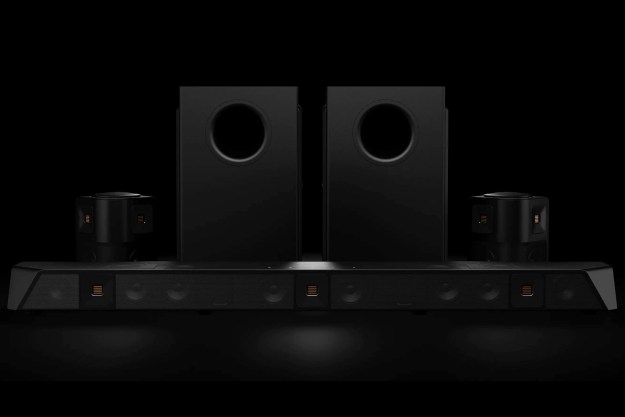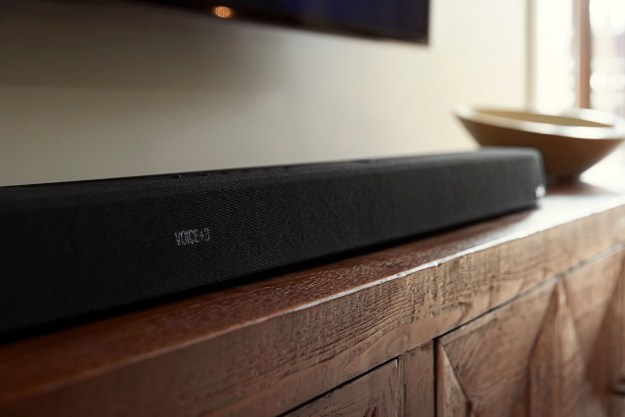In this installation of You Asked, resident expert Caleb Denison will answer your questions on why you might not be able to get Dolby Atmos from your streaming device, what’s a great upgrade from the Sony Z9D, and what’s the best Dolby Atmos soundbar under $500?
Dolby Atmos and EDID

Tim Looby wrote: In your Sonos Era 300 review, you mentioned Episode 7 of Star Wars, via Disney+. I just went to check out those scenes on my Arc/Sub/300s, [and] there’s no Atmos enabled on this movie. It’s listed as DDP+ 5.1. How did you get height channels working for any object placement, let alone precise ones? Am I missing something?
First off, a lot of content on Disney+ is available in Dolby Atmos, including Star Wars Episode 7. If you’re not seeing it as an option, then it’s possible you may have some settings that need adjusting. But, another likely culprit is that one of the devices in your setup doesn’t support Dolby Atmos, possibly the TV or the streaming device you are using. Or, as I said, they aren’t set up to enable Atmos. Either way, Disney+ won’t show that you can get Atmos, nor will it deliver an Atmos signal, unless it knows your system can handle
How does it know? Well, this is a great time to talk about EDID. EDID stands for extended display identification data. It’s a little informational message that’s embedded in the signal that passes from one HDMI device to another. The EDID is how your
For example: If you have an older or budget-model streaming stick that doesn’t support
The trick is to make sure that all the components in your chain support
Time to upgrade?

Joe wrote: I was lucky enough to get two Sony Z9Ds. Should I upgrade to a new TV such as the new Sony 77-inch QD-OLED, or a backlight master drive LCD, maybe a 95-series or Z9K? I don’t think 8K is really necessary, but if the price is right, I would upgrade.
The Sony Z9D was and is a great TV. In some key ways, it still outperforms many midlevel TVs you can buy today.
But you’re looking to upgrade, a QD-OLED or X95L would certainly be an upgrade. While the Z9D was advanced for its time, even its successor, the Z9F, was a notable upgrade. Today’s X95L, X93L, or A80L would look significantly better for motion, contrast, and color. Also, the built-in smart TV system and apps that run on it will all run much better. I mean, it’s been seven years, I understand if you want to upgrade. When great TV performance is important to you, I think waiting five years, let alone six or seven, is definitely going to give you justifiable upgrade-itis. Not everyone can afford to upgrade that often, but if you can, go for it. Anyway, moving to a modern OLED is going to be a huge upgrade, and upgrading to the X95L will also yield some very big improvements in picture quality. You’re not looking at making a small step forward, in my opinion. The difference will be something everyone in the house will notice. Hope that helps!
Dolby Atmos soundbars

David Rodriguez wrote: I recently purchased a TCL QM8 75-inch. Now I would like a minimalist soundbar to go with the picture. I’d rather have one soundbar and a subwoofer over rear speakers. Looking for an Atmos soundbar that will fit under my QM8 (currently on its stand). Budget ideally under $500. Please let me know what you suggest.
Well, it’s going to be tough to come up with one soundbar that satisfies all of those requirements. The best Atmos soundbar under $500 for Atmos effects is probably the Bose Smart Soundbar 600, but it doesn’t come with a subwoofer. The Yamaha YAS-209 and Klipsch Cinema 400 are both great-sounding soundbar/subwoofer combos that meet your budget, but neither does Atmos.
I’m going to recommend the Polk Signa S4. It’s pretty slim, so I think it is going to fit under your QM8, it does Atmos pretty well, has solid audio fidelity, and comes with a wireless subwoofer, but no surround speakers. It’s light on features, but you did want minimalist, so that will probably be fine. It’s super plug-and-play. All in all, I think that’s your best pick. And as a bonus, it comes in well under $500. You could add a subwoofer to the Bose 600 and do even better, but that would blow your budget.
HDMI 2.1 ports aplenty

Aaron Smith asked: I’m looking to upgrade my TV, but I’m frustrated with the limited number of
If I were to connect the Blu-ray player to the TV through a soundbar, would that have any negative effect on the viewing experience? Or is it better to connect the player directly to the TV?
I’m so happy to address this question because I’m hoping we can pump the brakes on the mostly unnecessary frustration and even outrage I’m seeing around a TV not having four full-bandwidth
Here is a perfect example. Aaron seems frustrated that both his
Because your
So, you could connect your PC and a game console to your
But, if you wanted to connect your
Editors' Recommendations
- You Asked: Is Dolby Vision a must-have? And how to handle Atmos with irregular ceilings
- Is Dolby Atmos FlexConnect a potential soundbar killer?
- Sennheiser’s Ambeo Soundbar Mini is a pricey, bedroom-sized Dolby Atmos speaker
- You Asked: best TVs for bright rooms, when to use eARC, and more
- Samsung adds HW-Q900C to its lineup of 2023 Dolby Atmos soundbars





